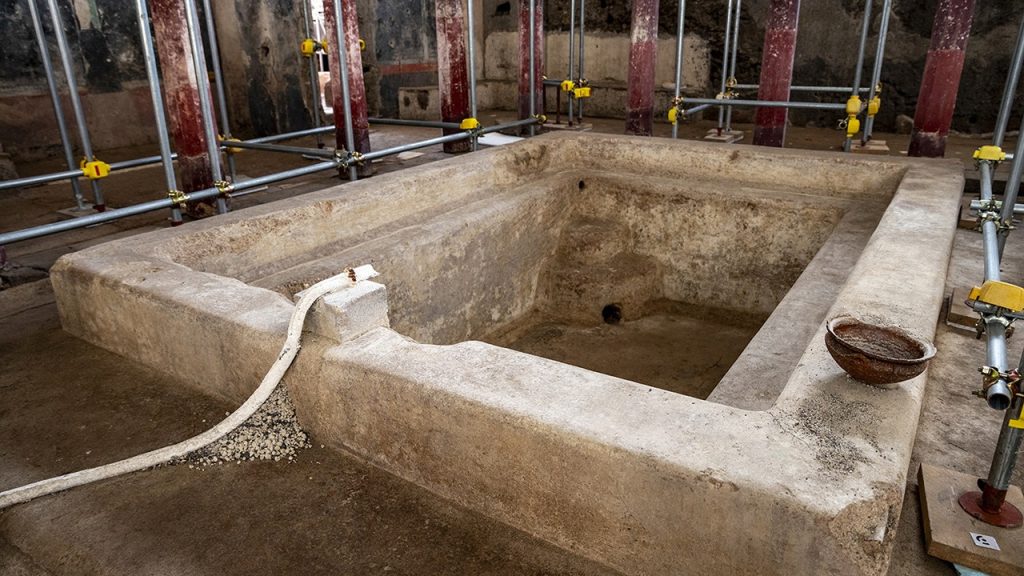The recent unearthing of a luxurious private bath complex in Pompeii offers a captivating glimpse into the opulence and social dynamics of the ancient Roman city before its tragic demise in AD 79. This elaborate bathing facility, capable of accommodating up to thirty guests, boasted separate hot, warm, and cold rooms, providing a haven for relaxation and socializing before transitioning to an adjacent banquet hall adorned with captivating scenes from Greek mythology. The complex forms part of a grand residence, excavated over the past two years, which unveils the multifaceted social life that thrived within Pompeii’s elite circles before the catastrophic eruption of Mount Vesuvius.
The grandeur of this private residence is further amplified by a central courtyard featuring a large basin, hinting at the wealth and status of its owner, believed to be a prominent member of Pompeii’s elite during the city’s final years. This discovery sheds light on the dual function of Roman houses, serving not only as private dwellings but also as platforms for public life and self-promotion. The layout of the residence, with its integrated bath complex and banquet hall, evokes scenes from the Roman novel “The Satyricon,” where such spaces played a central role in showcasing wealth and social standing. The integration of leisure and social activities within the domestic sphere underscores the importance of public display and the pursuit of status in Roman society.
The frescoes that adorn the bath complex draw inspiration from Greek culture, emphasizing themes of leisure, intellectual pursuits, and artistic appreciation. This deliberate incorporation of Greek elements reflects the Roman elite’s admiration for Hellenistic culture and their desire to emulate its refined aesthetics and intellectual traditions. The homeowner’s intention to create a spectacle, transforming their private residence into a miniature Greek-style palace and gymnasium, speaks volumes about the prevailing social aspirations and the pursuit of cultural distinction within Pompeii’s elite circles. The integration of these cultural elements further reinforces the idea of the home as a stage for self-representation and the projection of a cultivated image.
The discovery of the remains of over 1,000 victims within Pompeii, including two bodies found within this particular residence, adds a poignant layer to the narrative of the city’s destruction. The discovery of a woman, aged between 35-50, clutching jewelry and coins, and a younger man, offers a glimpse into the final moments of these individuals as they sought refuge from the devastating eruption. These findings serve as a somber reminder of the human tragedy that unfolded alongside the preservation of Pompeii’s material culture.
The meticulous excavation of this private bath complex and the surrounding residence provides invaluable insights into the social fabric and cultural values of Pompeii’s elite. The integration of leisure spaces, artistic embellishments, and cultural references paints a vivid picture of a society that valued social interaction, intellectual pursuits, and the display of wealth and status. This discovery not only expands our understanding of Roman domestic architecture but also sheds light on the complex interplay between private and public life within the ancient city.
The ongoing archaeological work at Pompeii continues to unveil the hidden stories of this remarkable city, frozen in time by the catastrophic eruption of Mount Vesuvius. Each new discovery, like the unearthing of this opulent private bath complex, adds another piece to the puzzle, enriching our understanding of Roman society and its enduring legacy. The meticulous preservation of Pompeii’s ruins provides a unique opportunity to delve into the past, exploring the lives, customs, and aspirations of those who once inhabited this vibrant city.

